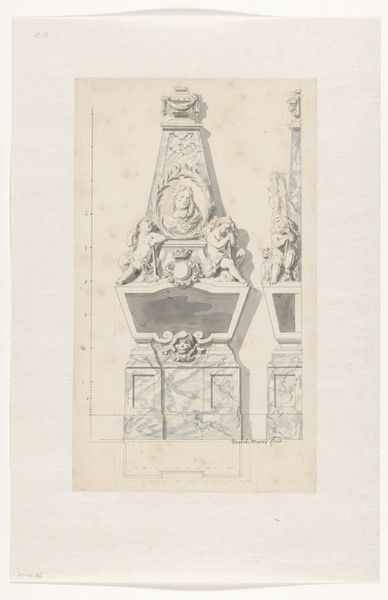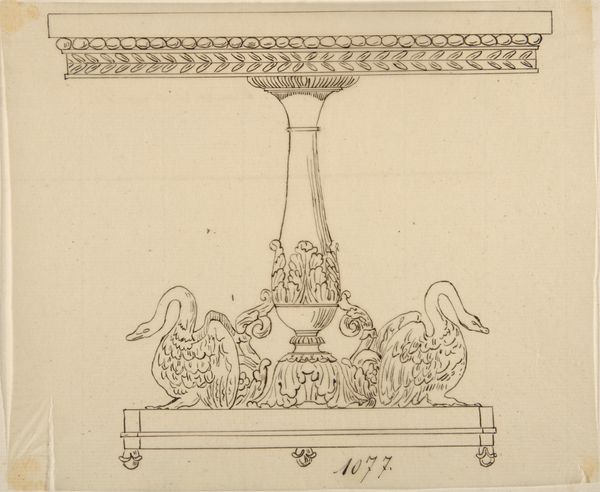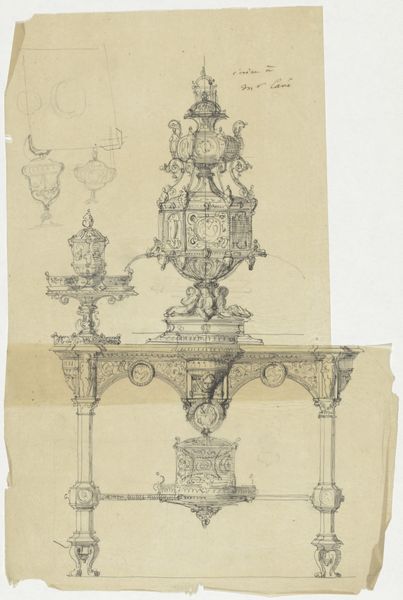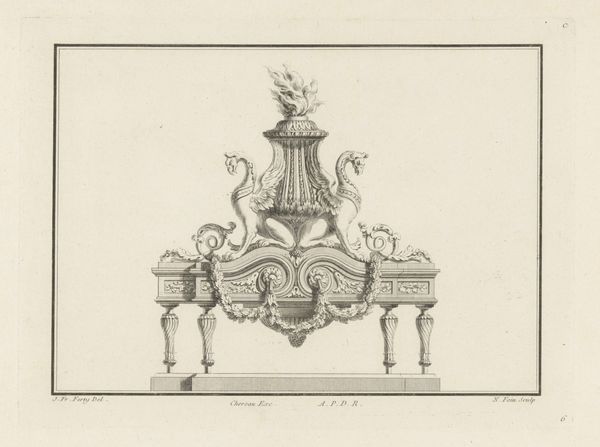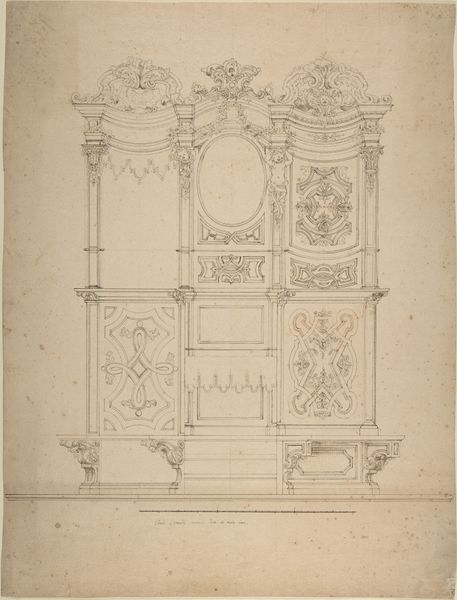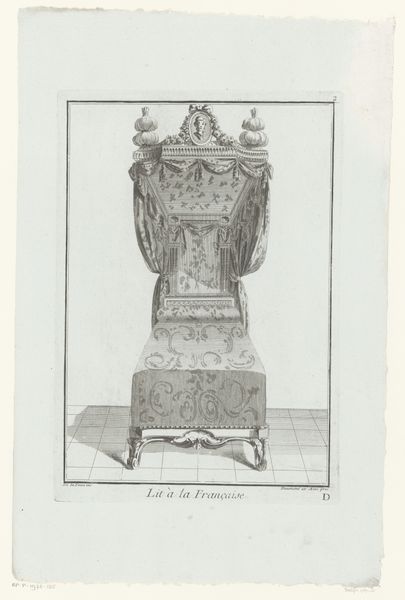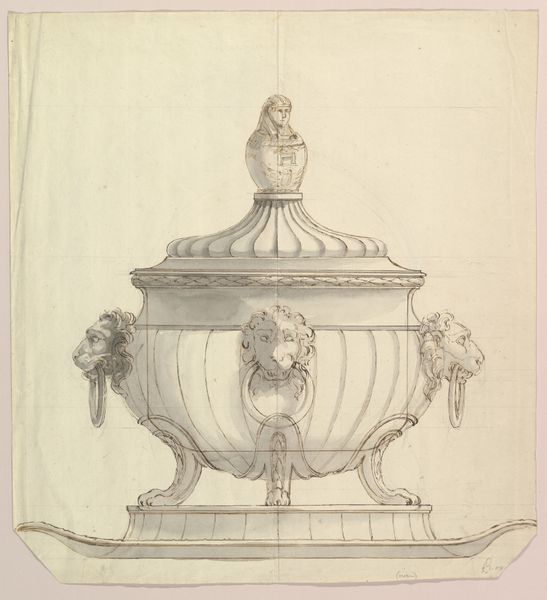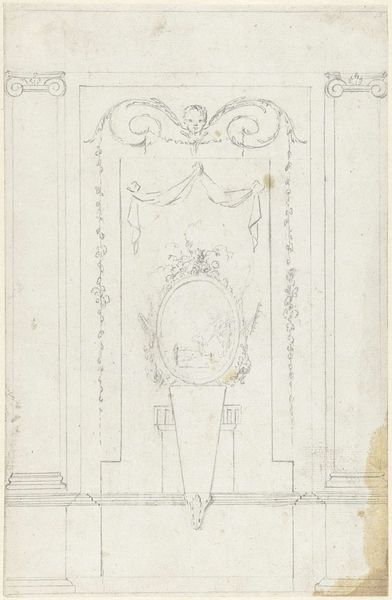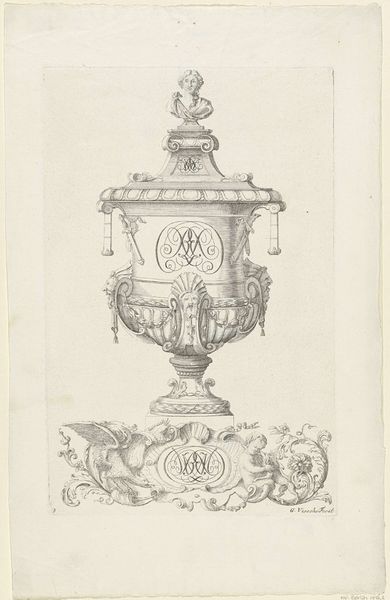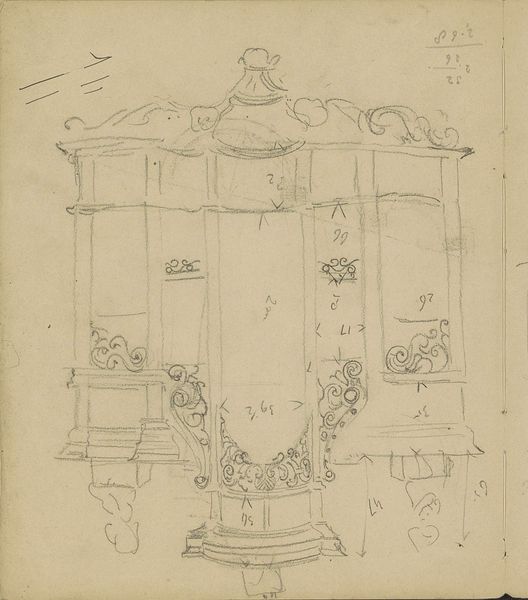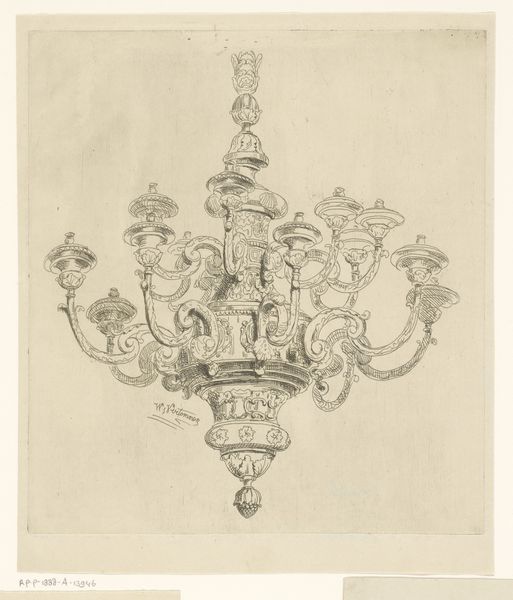
drawing
#
drawing
#
neoclacissism
Dimensions: 488 mm (height) x 324 mm (width) (bladmaal)
Curator: This intricate drawing, "Udkast til en drejet opsats med Frederik V.s buste," which translates to "Draft for a turned stand with Frederik V's bust," was rendered in 1751 by Lorenz Spengler. I see a careful drawing, very architectural, obviously intended as a design for a three-tiered sculptural object of some kind. It looks top-heavy! Editor: My initial thought is how revealing it is about power. To me, this sketch for a display piece speaks volumes about the commodification of royalty and the methods used to reinforce hierarchies. Curator: Well, as a materialist, what catches my eye is how it exemplifies neoclassical aesthetics filtering into applied arts and craftsmanship. Spengler's careful rendering of this projected object reveals an ambition to elevate craftsmanship to the realm of high art, doesn't it? How the artist envisioned its production, the choice of material, whether it be silver or porcelain. Editor: And it's precisely that interplay of neoclassical form and royal portraiture which highlights the deliberate construction of identity and the reinforcement of power dynamics during that time. Every flourish, every curve, seems designed to legitimize the monarchy, don't you think? Curator: Yes, that connection between the physical object and social authority interests me. This piece, should it have been made, would’ve occupied physical space and would have acted as a conduit of value. Who would have been involved in the fabrication process? How many hours of labor? What’s so fascinating here is to explore how class and craft intersect through this decorative stand. Editor: Absolutely. Thinking about the era and the societal pressures, I'm reminded that this elaborate design wasn’t just about aesthetic appreciation. But, I am struck by how fragile it appears despite what was, supposedly, rock solid. Curator: That tension—the precariousness of power symbolized in delicate porcelain versus its monumental intentions—makes the object incredibly compelling, and highlights what is not yet materially defined, how much it exists solely in the conceptual, at this early stage in its creation. It certainly gives a lot to consider! Editor: Indeed, a striking glimpse into the social theatre of the 18th century and all its performative, constructed grandeur.
Comments
No comments
Be the first to comment and join the conversation on the ultimate creative platform.
